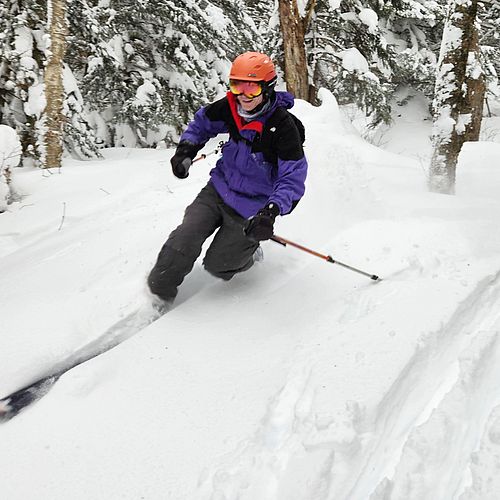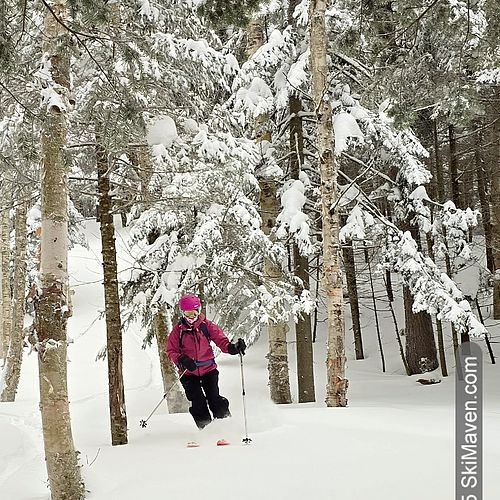The Skimeister and I had an interesting day on Saturday at an adaptive nordic instructor clinic held at Bolton Valley. As large, fluffy snowflakes fell, we were learning about some of the equipment and strategies used for nordic sit-skiing.
You may recall that the Skimeister skied on a sit-ski a number of times over the last two seasons, after he blew out his knee. It was such a positive experience for him to get out into the fields and woods in the winter, that we wanted to learn how to help others enjoy the same activity. I mean if you are going to live in Vermont, it's best to have a way to enjoy the winter!
In the US, nordic sit-skiing seems to have less of a following than adaptive downhill skiing. More publicity and funding of educational and racing programs would help, for sure, and there are other challenges such as the expense of the adaptive skiing equipment and the often difficult access for those who use wheelchairs, crutches, canes or walkers to get into warming rooms and bathrooms at nordic centers.
But organizations such as the Northeast Disabled Athletic Association (NDAA) aim to break down some of the barriers. They provide introductory nordic skiing and biathlon clinics for people with physical disabilities, low-cost rentals of equipment, and a pathway to competition—right up to the elite Paralympic Games. Saturday's clinic was taught by NDAA's Patrick Standen, who is an accomplished sit-skier and multi-sport athlete from northern Vermont.
In addition to seeing how he gets people poling and gliding in a sit-ski for the first time, he showed our group of nine participants a walker that attaches to two skis. This equipment would be used for someone who can stand, but needs extra support to balance while cross-country skiing. Patrick says that he encourages people to: "Move what muscles you have."
With both of these kinds of adaptive nordic equipment, a firmly groomed and tracked surface is needed for beginners, as well as a flat area for learning how to get gliding. As the skiers progress, they will challenge themselves with ascending and descending hills, and skiing through turns in the trail.
Breaking and turning is typically assisted by the skier putting one or both hands down to the snow and applying pressure, or thrusting the tops of their ski poles into the snow to get quicker results.
As the Skimeister and I found out, larger hills might require that a companion skier use rope and carabiners attached to the sit-ski to help pull the sit-skier up a steep hill, or to help descend a steep hill at a controlled speed.
We were so thankful that this adaptive equipment existed, and we know that there are people out there with physical disabilities who might want to give skiing a go. We're hoping that with the leadership of organizations such as NDAA and NENSA, these potential skiers might take advantage of opportunities to learn to ski and even put their skills to the test through competition.
Want more details on adaptive cross-country skiing and programs? Visit the following links:
- <link http: www.disabledathletics.org external-link-new-window>Northeast Disabled Athletics Association (NDAA)
- <link http: adaptive.nensa.net external-link-new-window>New England Nordic Skiing Association (NENSA)








